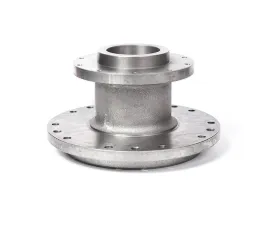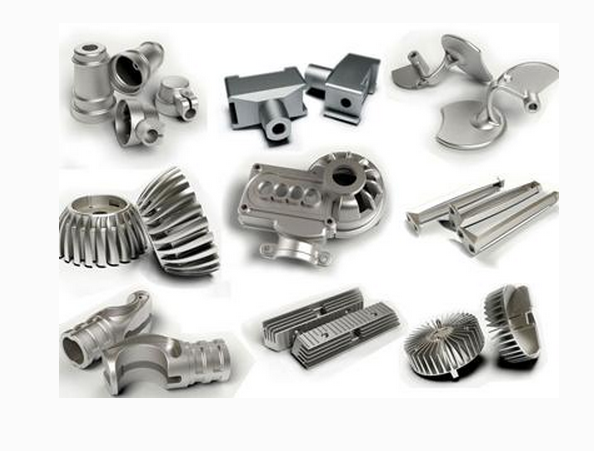Mobile:+86-311-808-126-83
E-mail:info@ydcastings.com
Pièces de pompe
In today's industrial landscape, efficiency and durability in fluid handling systems are paramount. Our company proudly introduces our latest line of premium pump parts, engineered to deliver unmatched performance across various applications. From cutting-edge turbine designs to robust pump casing solutions, we're setting new standards in pump technology.

Superior Water Pump Impeller Designs for Maximum Efficiency
Notre water pump impeller series represents a breakthrough in hydraulic engineering. These precision-crafted components are optimized for energy efficiency and fluid movement, reducing operational costs while increasing output. The unique blade geometry of our turbine designs ensures smooth flow patterns, minimizing turbulence and cavitation. Manufactured using advanced composite materials, these water pump impeller units offer exceptional resistance to wear and corrosion, even in the most demanding environments. What sets our turbine solutions apart is their balanced design, which significantly reduces vibration and extends bearing life. Industries ranging from water treatment to agricultural irrigation are experiencing remarkable performance improvements after switching to our water pump impeller technology. The reduced maintenance requirements and increased service intervals make these components a smart long-term investment for any fluid handling system.
Durable Pump Casing Solutions for Enhanced System Integrity
The foundation of any reliable pumping system lies in its pump casing, and our engineering team has developed solutions that redefine durability. Our pump casing products feature innovative ribbed designs that provide structural reinforcement without adding excessive weight. The precision-machined interior surfaces ensure perfect alignment with turbine components, creating optimal flow channels that maximize hydraulic efficiency. Special attention has been given to the volute design in our pump casing series, ensuring consistent pressure distribution and reducing energy losses. These casings are available in various material grades to suit different applications, from chemical processing to marine operations. The patented sealing system in our pump casing eliminates common leakage points, significantly reducing downtime and maintenance costs. Field tests have demonstrated that our pump casing solutions maintain dimensional stability even under extreme temperature fluctuations, ensuring long-term reliability in challenging operating conditions.
Exploring Versatile Centrifugal Pump Impeller Types
Our comprehensive range of centrifugal pump impeller types addresses every conceivable application requirement. From open turbine designs ideal for handling solids to semi-open configurations offering the perfect balance between efficiency and cleanability, we have solutions for every challenge. The closed turbine variants in our centrifugal pump impeller types lineup deliver exceptional efficiency for clean liquid applications. Specialized vortex turbine designs handle abrasive or viscous fluids with ease, while our channel turbine options are perfect for wastewater applications. Each of our centrifugal pump impeller types undergoes rigorous computational fluid dynamics testing to optimize performance characteristics. The result is a family of turbine products that deliver precisely the right flow patterns, pressure development, and energy consumption for specific applications. Our technical team works closely with clients to select the ideal centrifugal pump impeller types for their unique operational requirements.
Premium Stainless Steel Impeller for Corrosive Environments
For applications demanding superior corrosion resistance, our stainless steel impeller series stands as the industry benchmark. These high-grade stainless steel impeller units are manufactured from specially formulated alloys that withstand aggressive chemicals, seawater, and extreme pH levels. The precision casting process used for our stainless steel impeller products ensures perfect hydraulic profiles and surface finishes that minimize friction losses. Beyond their corrosion resistance, these turbine components offer exceptional mechanical strength, maintaining their structural integrity under high rotational speeds and shock loads. The stainless steel impeller range includes options with various hardening treatments for applications involving abrasive fluids. What truly distinguishes our stainless steel impeller solutions is their bio-compatibility, making them ideal for pharmaceutical and food processing applications where material purity is critical. These components deliver reliable performance in environments where lesser materials would quickly fail.
Pièces de pompe FAQs
What makes your water pump impeller designs more efficient than conventional options?
Notre water pump impeller designs incorporate advanced computational fluid dynamics modeling to optimize blade geometry, reducing energy losses and improving flow characteristics. The precision manufacturing ensures perfect hydraulic balance, minimizing vibration and wear.
How does your pump casing prevent common leakage issues?
Notre pump casing features an innovative multi-stage sealing system and precision-machined mating surfaces that eliminate traditional leakage paths. The reinforced structural design maintains dimensional stability under pressure fluctuations.
Which of your centrifugal pump impeller types is best for abrasive fluids?
For abrasive fluids, we recommend our vortex-style turbine from the centrifugal pump impeller types range, which creates a protective fluid buffer around the turbine or our hardened stainless steel impeller options with special wear-resistant coatings.
What applications are ideal for your stainless steel impeller products?
Notre stainless steel impeller products excel in corrosive environments like chemical processing, seawater handling, food production, and pharmaceutical applications where material purity and corrosion resistance are critical.
Can you customize pump parts for specific operational requirements?
Absolutely. We specialize in engineering custom pump parts solutions, offering tailored turbine designs, specialized pump casing configurations, and material selections to meet unique application challenges.
As we continue to innovate in pump parts technology, our commitment remains to deliver components that redefine performance standards. Whether it's our advanced water pump impeller designs, robust pump casing solutions, diverse centrifugal pump impeller types, or corrosion-resistant stainless steel impeller products, each component is engineered to provide reliable, efficient, and long-lasting performance. Contact our engineering team today to discover how our pump parts can optimize your fluid handling systems.
-
Materials Used in Manufacturing Cap End Pipe FittingsNouvellesNov.24,2025
-
Material Properties of CF8M CastingNouvellesNov.24,2025
-
How to Inspect Pump Cap Ends for DamageNouvellesNov.21,2025
-
Backward Curved Impeller – Efficient Airflow Solutions for Industry | YD CastingsNouvellesNov.21,2025
-
Automobile Water Pump - Efficient, Quiet, Durable & ElectricNouvellesNov.21,2025
-
Impeller for Pumps – High-Efficiency, Durable, OEM-ReadyNouvellesNov.21,2025
High-Quality Pump Parts for Optimal Performance | Your Trusted Supplier
The Essentials of Pump Parts Understanding Their Roles and Importance
Pumps are vital components in various industries, including water treatment, oil and gas, pharmaceuticals, and food processing. They ensure the efficient movement of liquids and gases, making their functionality crucial for operational success. At the heart of every pump, a variety of parts work in unison to facilitate this movement. Understanding these components and their roles can greatly enhance the efficiency and longevity of pump operations.
1. Casing
The pump casing is the outer shell that houses all internal components. It not only provides structural support but also directs the fluid flow through the pump. Casings are typically made from materials like cast iron, stainless steel, or thermoplastics, depending on the application. A well-designed casing minimizes energy loss and helps maintain the integrity of the pump under pressure.
2. Impeller
The impeller is the rotating part of the pump that converts mechanical energy into hydraulic energy. It works by increasing the velocity of the fluid as it enters the pump. The design of the impeller can vary significantly; common shapes include open, semi-open, and closed impellers. Each design has its own advantages regarding efficiency, pressure generation, and the ability to handle solids in the fluid.
3. Suction and Discharge Ports
These ports are critical for the pump's operation. The suction port draws fluid into the pump, while the discharge port directs it outwards. Proper sizing and positioning of these ports are essential for maximizing flow rates and reducing turbulence, which can lead to inefficiencies.
4
. Sealspump parts

Seals are crucial for preventing leaks and maintaining the fluid integrity within the pump. They are typically located between the rotating shaft and the stationary casing. Common types of seals include mechanical seals and packing seals. Proper sealing is vital, as leaks can lead to significant operational losses and environmental hazards.
5. Bearings
Bearings support the rotating shaft within the pump, ensuring it moves smoothly and efficiently. They reduce friction and wear on the shaft, prolonging the life of the pump. Different types of bearings, such as roller bearings or sleeve bearings, are chosen based on the application requirements, including load capacity and lubrication needs.
6. Drive Mechanism
The drive mechanism, which can be electric motors, turbines, or engines, provides the necessary power for the pump to operate. Proper selection of the drive system ensures that the pump operates at optimal efficiency and meets the required flow and pressure specifications.
7. Control Devices
Modern pumps often come equipped with control devices that regulate their operation. These devices can include pressure sensors, flow meters, and variable frequency drives (VFDs). By integrating these technologies, operators can enhance energy efficiency, adapt to varying demand, and improve overall system reliability.
Conclusion
Understanding the individual parts of a pump and their functions is essential for anyone involved in the operation and maintenance of pumping systems. Each component plays a significant role in ensuring that the pump operates efficiently, safely, and reliably. By maintaining these parts and addressing potential issues promptly, industries can enhance their productivity and minimize downtime. Investing time in understanding pump parts not only optimizes performance but also contributes to a sustainable operational model across various applications.
-
Materials Used in Manufacturing Cap End Pipe FittingsNouvellesNov.24,2025
-
Material Properties of CF8M CastingNouvellesNov.24,2025
-
How to Inspect Pump Cap Ends for DamageNouvellesNov.21,2025
-
Backward Curved Impeller – Efficient Airflow Solutions for Industry | YD CastingsNouvellesNov.21,2025
-
Automobile Water Pump - Efficient, Quiet, Durable & ElectricNouvellesNov.21,2025
-
Impeller for Pumps – High-Efficiency, Durable, OEM-ReadyNouvellesNov.21,2025











